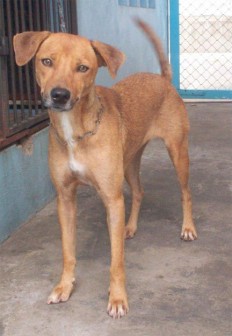Organophosphate
poisoning
There are several chemicals on the market which pet owners use to eliminate ectoparasites (ticks, fleas, lice, etc) and which have a base ingredient of organophosphates or carbamates.
Some of the more popular ones are Sevin dust (powder), Supona, Malathion, Dichlor-vos.
All of these are potential killers. I often tell clients (and though I have not done a statistical analysis, it is probably true) that these medications probably make more animals sick and are more lethal than all of other virus diseases combined.
These chemicals are in and of themselves very dangerous. But their deadliness is increased, because of the misuse and wrong usage of these substances by caregivers. For example, many of us feel that if a dilution rate of two teaspoonfuls to one gallon of water works relatively well as a bath against ticks and fleas, then four teaspoonfuls would function even more efficiently. Well, it just doesn’t work that way. All organophosphates are potentially poisonous, and if we increase the dosage rate (making the solution more concentrated with the deadly poison) the animal can be poisoned.

There is also another possibility. As the fleas, say, try to escape the lethal lotion or powder, they burrow deeper into the skin. This causes the dog to bite at its own skin to get at them. In this way, the animal picks up the poisonous material orally.

I should mention that some dewormers contain dichlorvos (an organophosphate). If one overdoses the dewormer orally, and another organophosphate solution topically (on the skin), then the animal is collecting a double whammy of organophosphates. This could lead to the expression of poison symptoms. The situation with which I am most confronted occurs when the animal is bathed with an organophosphate solution and then an organophosphate – impregnated tick and flea collar is placed around the animal’s neck. The poor dog is then getting a double dose of the poison.
The organophosphates are really nerve poisons. They affect the nervous system primarily. Animals that have been poisoned by organophosphates will exhibit nervous symptoms, for example unsteady gait. Vomiting, twitching of the muscles, sometimes even diarrhoea, asthmatic wheezing, convulsions are visible. Later the animal collapses into a coma.
Treatment
There is an antidote for organophosphate poisoning. It is atropine. But one has to administer this drug immediately after the poisoning has occurred.
If too much time has elapsed, the poison would have become too widespread in the animal’s body for the antidote to do any good. In such cases, one has to treat the symptoms. Only your vet can do that optimally.
Prevention
Before you use a product, ensure that the manufacturers (or your vet) advise whether the chemical can be used on dogs/cats. Don’t use products made for large domestic livestock on your dogs/cats. Use only as directed.
Please implement disease preventative measures (vaccinations, routine dewormings, monthly anti-heartworm medication, etc) and adopt-a-pet from the GSPCA’s Animal Clinic and Shelter at Robb Street and Orange Walk, if you have the wherewithal to care well for the animals. Do not stray your unwanted pets, take them to the GSPCA’s Clinic and Shelter instead. If you do not wish your pet to have puppies or kittens, you may exploit the GSPCA’s free spay and neutering programme. If you see anyone being cruel to an animal, or if you need any technical information, please get in touch with the Clinic and Shelter by calling 226-4237.




